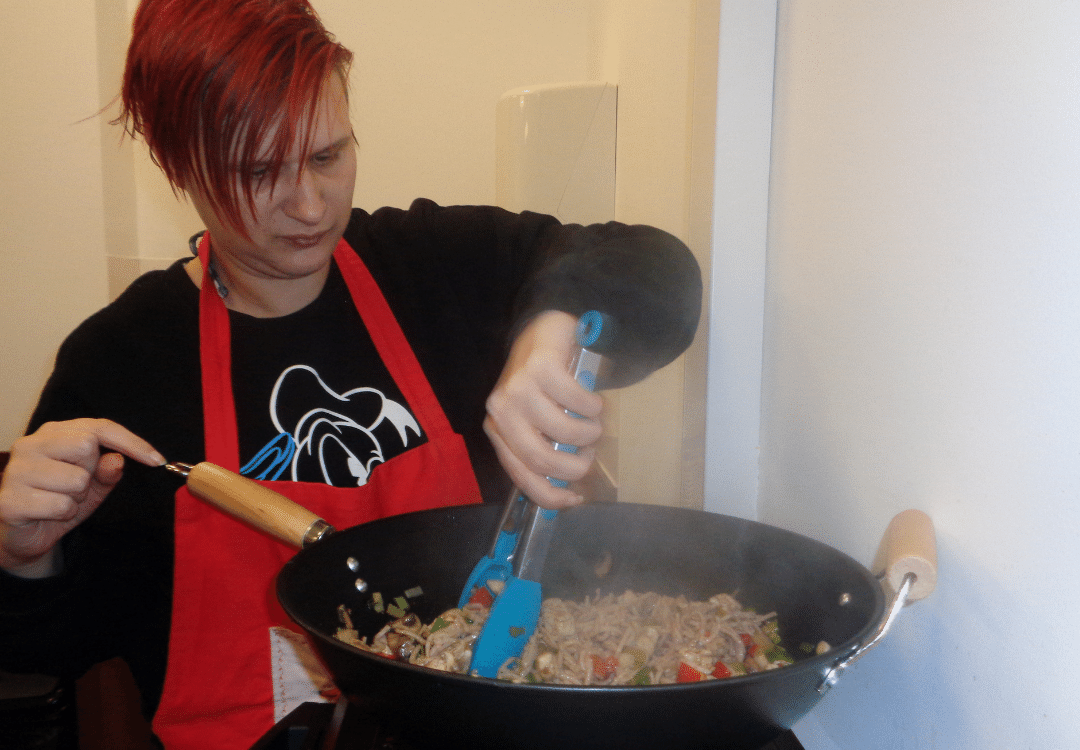Independent living for adults with learning disabilities: Learning how to cook and make healthy food choices
it’s essential our learners know how to maintain a full, varied, and balanced diet. This doesn’t mean `dieting` – it simply means that our learners will be confident that what they choose to eat throughout the day will fill their tummies with the food groups needed for a healthy functioning body. This blog is all about learning how to cook and make healthy food choices – a pivotal part of independent living for adults with learning disabilities.
6 ways we encourage healthy eating at CASE
From day one, our learners are encouraged to listen to their bodies and make their own choices about food and what they would like to eat for breakfast, lunch, tea, and snacks.
Balanced snacking
We offer our learners a choice of balanced snacks every day by loading our tuck trolley with nutty cereal bars, pieces of fruit, cream cheese dunkers, rice cakes, low-fat crisps, and more. We include a small selection of chocolate bars for those craving a sweet pick-me-up (because these are fine in moderation, too!).
Smarter cooking tools
We choose cooking spray over oil and grilling over frying.
Simple swaps
Often our learners will opt to make smart and simple swaps – for example, using lettuce wraps instead of a burger bun so they’ve got an extra portion of veg!
These food groups are…
✔️Meat & meat alternatives – Fish, meat, eggs, and nuts, which give us iron, zinc, and protein
✔️Fruit & veggies – Needed for fibre intake, along with vitamins and minerals.
✔️Dairy & dairy alternatives – Milk, yoghurt, cheese to ensure our bones are strong.
✔️Carbohydrates – Cereal, rice, and pasta to give us energy.
✔️Fats and sugars – A little of what we fancy is good for our mental and emotional health!
Perfect portion control
We practise plating our meals up so they consist of mostly veggies and protein, and a smaller serving of carbohydrates.
Ingredients fresh from the source
Our learners have the opportunity to grow and harvest fruit & veggies at our allotment space (known as Grow); once they’re ready, the fresh ingredients are picked and used in dishes.
Starting from scratch
We encourage our learners to make everything from scratch – from pasta sauces to jams! This is a great way to cut unnecessary processed ingredients and preservatives, plus they can feel proud that everything has been made by their own fair hands.
Suggested reading for you
Link Grow Group @ The Allotment: February Highlights


